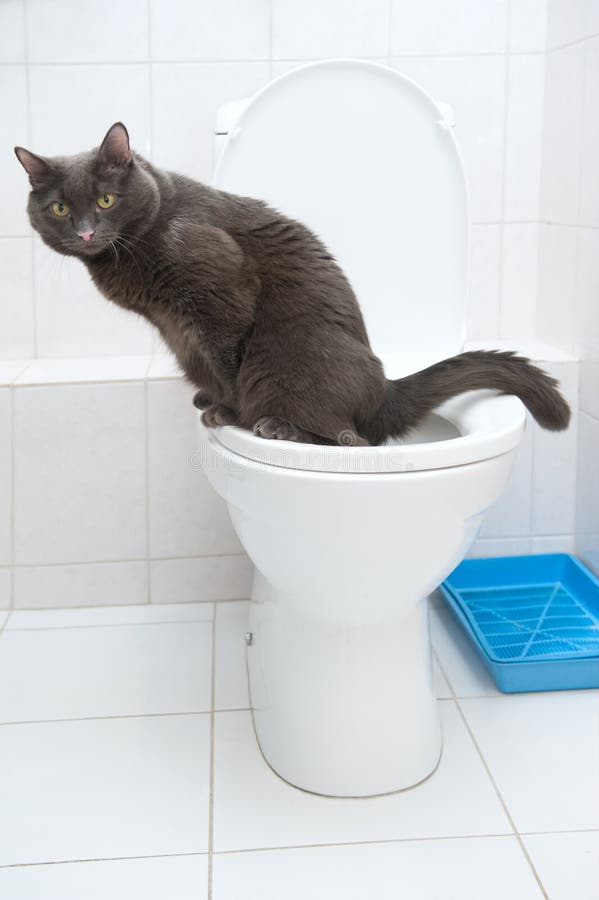Don't Flush Cat Poop Down Your Toilet - Preserve Your House's Pipe Integrity
Don't Flush Cat Poop Down Your Toilet - Preserve Your House's Pipe Integrity
Blog Article
The author is making a few good points on the subject of Can You Flush Cat Poo or Litter Down the Toilet? as a whole in this article below.

Intro
As feline proprietors, it's important to bear in mind exactly how we get rid of our feline good friends' waste. While it might appear practical to purge feline poop down the bathroom, this method can have damaging repercussions for both the setting and human wellness.
Alternatives to Flushing
The good news is, there are more secure and a lot more accountable ways to dispose of feline poop. Think about the complying with alternatives:
1. Scoop and Dispose in Trash
One of the most usual technique of dealing with cat poop is to scoop it right into a naturally degradable bag and throw it in the garbage. Be sure to utilize a dedicated trash scoop and take care of the waste quickly.
2. Usage Biodegradable Litter
Opt for naturally degradable pet cat litter made from materials such as corn or wheat. These clutters are environmentally friendly and can be safely thrown away in the garbage.
3. Bury in the Yard
If you have a lawn, take into consideration hiding cat waste in a designated area far from veggie yards and water sources. Be sure to dig deep sufficient to stop contamination of groundwater.
4. Mount a Pet Waste Disposal System
Invest in an animal waste disposal system particularly created for pet cat waste. These systems make use of enzymes to break down the waste, lowering smell and environmental impact.
Health and wellness Risks
In addition to environmental issues, purging pet cat waste can likewise present health and wellness risks to human beings. Pet cat feces may contain Toxoplasma gondii, a bloodsucker that can trigger toxoplasmosis-- a possibly serious disease, especially for pregnant females and individuals with weakened immune systems.
Ecological Impact
Purging feline poop introduces dangerous pathogens and bloodsuckers into the water, positioning a substantial risk to water ecosystems. These pollutants can negatively influence aquatic life and compromise water quality.
Final thought
Liable pet ownership prolongs beyond supplying food and sanctuary-- it also entails correct waste monitoring. By avoiding flushing cat poop down the toilet and opting for alternative disposal methods, we can reduce our environmental footprint and secure human health and wellness.
Why Can’t I Flush Cat Poop?
It Spreads a Parasite
Cats are frequently infected with a parasite called toxoplasma gondii. The parasite causes an infection called toxoplasmosis. It is usually harmless to cats. The parasite only uses cat poop as a host for its eggs. Otherwise, the cat’s immune system usually keeps the infection at low enough levels to maintain its own health. But it does not stop the develop of eggs. These eggs are tiny and surprisingly tough. They may survive for a year before they begin to grow. But that’s the problem.
Our wastewater system is not designed to deal with toxoplasmosis eggs. Instead, most eggs will flush from your toilet into sewers and wastewater management plants. After the sewage is treated for many other harmful things in it, it is typically released into local rivers, lakes, or oceans. Here, the toxoplasmosis eggs can find new hosts, including starfish, crabs, otters, and many other wildlife. For many, this is a significant risk to their health. Toxoplasmosis can also end up infecting water sources that are important for agriculture, which means our deer, pigs, and sheep can get infected too.
Is There Risk to Humans?
There can be a risk to human life from flushing cat poop down the toilet. If you do so, the parasites from your cat’s poop can end up in shellfish, game animals, or livestock. If this meat is then served raw or undercooked, the people who eat it can get sick.
In fact, according to the CDC, 40 million people in the United States are infected with toxoplasma gondii. They get it from exposure to infected seafood, or from some kind of cat poop contamination, like drinking from a stream that is contaminated or touching anything that has come into contact with cat poop. That includes just cleaning a cat litter box.
Most people who get infected with these parasites will not develop any symptoms. However, for pregnant women or for those with compromised immune systems, the parasite can cause severe health problems.
How to Handle Cat Poop
The best way to handle cat poop is actually to clean the box more often. The eggs that the parasite sheds will not become active until one to five days after the cat poops. That means that if you clean daily, you’re much less likely to come into direct contact with infectious eggs.
That said, always dispose of cat poop in the garbage and not down the toilet. Wash your hands before and after you clean the litter box, and bring the bag of poop right outside to your garbage bins.
https://trenchlesssolutionsusa.com/why-cant-i-flush-cat-poop/

Hopefully you liked our article on How to Dispose of Cat Poop and Litter Without Plastic Bags. Many thanks for taking time to browse our piece. Do you know about somebody who is inquisitive about the topic? Do not hesitate to share it. Thank you for your time. Come back soon.
Get A Quote Report this page